|
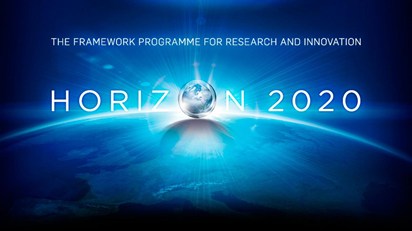
Horizon
2020 is the financial instrument implementing the Innovation
Union, a Europe
2020 flagship initiative aimed at securing Europe's global
competitiveness. Running from 2014 to 2020 with a budget of just over
70.9 billion, the EUs new programme for research and
innovation is part of the drive to create new growth and jobs in Europe.
Horizon 2020
will succeed Framework Programme 7 with an increased budget as the main financial instrument supporting European research and development.
Horizon
2020 provides major simplification through a single set of rules. It
will combine all research and innovation funding currently provided
through the Framework
Programmes for Research and Technical Development, the innovation
related activities of the Competitiveness and Innovation Framework
Programme (CIP)
and the European Institute of Innovation and Technology (EIT).
The
proposed support for research and innovation under Horizon 2020 will:
-
Strengthen
the EUs position in science with a dedicated budget of 24,341
million. This will provide a boost to top-level research
in Europe, including the very successful European Research Council (ERC).
-
Strengthen
industrial leadership in innovation 17,015 million.
This includes major investment in key technologies, greater access
to capital and support for SMEs.
-
Provide
30,956 million to help address major concerns
shared by all Europeans such as climate change, developing
sustainable transport and mobility, making renewable energy more
affordable, ensuring food safety and security, or coping with the
challenge of an ageing population.
|
Horizon
2020 will tackle societal challenges by helping to bridge the gap
between research and the market by, for example, helping innovative
enterprise to develop their technological breakthroughs into viable
products with real commercial potential. This market-driven approach
will include creating partnerships with the private sector and Member
States to bring together the resources needed.
International
cooperation will be an important cross-cutting priority of Horizon 2020.
In addition to Horizon 2020 being fully open to international
participation, targeted actions with key partner countries and regions
will focus on the EUs strategic priorities. Through a new
strategy, a strategic and coherent approach to international
cooperation will be ensured across Horizon 2020.
Horizon
2020 will be complemented by further measures to complete and further
develop the European
Research Area by 2014. These measures will aim at breaking down
barriers to create a genuine single market for knowledge, research and
innovation.
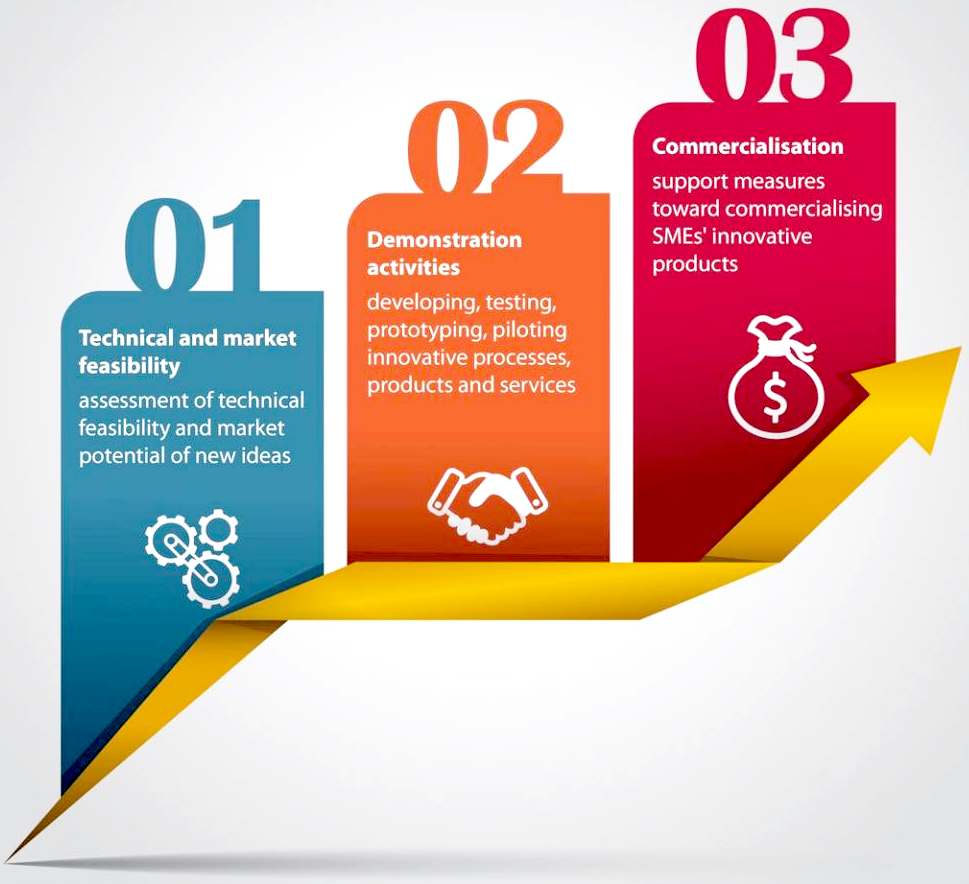
SME
BENEFITS
One of the groups that stand to significantly benefit from Horizon 2020 are small to medium sized businesses (SMEs), which will be allocated at least 7 billion Euros for research and innovation work. The EU is also making significant efforts to unlock the vast amount of valuable research and Intellectual Property that is held by universities and research centres across Europe, through fast-track to market schemes designed specifically for innovating SMEs.
In particular, Horizon 2020 will see a completely new and dedicated SME instrument designed to:
* Fill gaps in funding for early-stage and high-risk research and innovation by SMEs;
*
Provide support for all types of innovation following a bottom-up approach, including scientific, social and service innovations;
*
Target all types of developing and growing SMEs.
This instrument will include distinct phases for feasibility assessment, research & development and commercialisation. Each stage will be open to all SMEs and successful completion of one stage will allow an SME to move to the next.
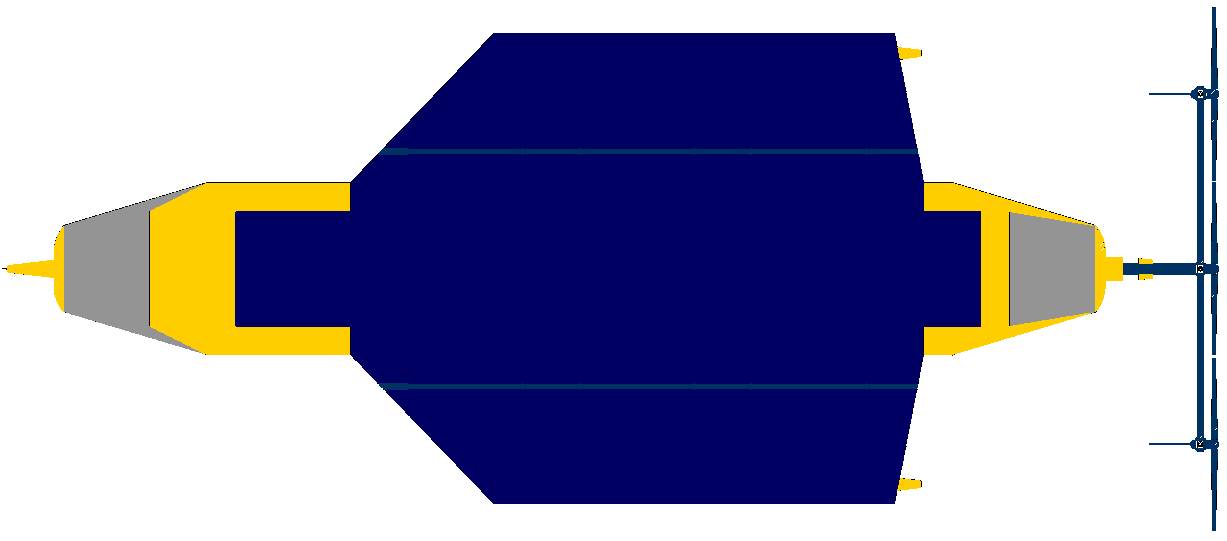
CCC
CHALLENGER - This is a draft design for the 'Climate Change Challenger,' a zero
carbon ship concept that may be up scaled to larger cargo
and cruise
vessels. If the concept is proven, it could provide a way for the IMO to reach
their zero carbon objectives for 2050 and 2100.
(DRAFT 18/10/2013)
(European Commission C(2013)XXX of XX December 2013)
MG.4.1-2014. Towards the energy efficient and emission free vessel
MG.4.2-2014. Safer and more efficient waterborne operations, new technologies
& smarter traffic management
MG.4.3-2015. System modelling and life-cycle cost optimisation for waterborne assets

H2020
Call: Zero or Near Zero Carbon Vessels (Section 4, Waterborne -
MG.4.1-2014)
Seeking
shipbuilders to co-develop low drag hull technology
 Ref: RDUK20131220001
Ref: RDUK20131220001
A
UK company is part of a consortium of UK members seeking a European
partner to join a Horizon 2020 funding bid. The aim is to develop a
novel low-drag hull. They are seeking industrial partners in the
shipbuilding industry to co-develop the innovation to proof of concept
and to create a demonstration prototype. They are also seeking potential
end users, such as supply ships.
HORIZON 2020 WORK PROGRAMME 2014-2015
Smart, green and integrated transport
Part 11 pages 28 to 32 (5 page extract of 87 pages)
4. WATERBORNE
A modern, safe, secure and resource efficient waterborne transport system, encompassing
deep sea shipping, coastal shipping around Europe and the use of the internal waterways, is an
essential requirement for an economy which aims at succeeding on the global scale and
supporting a truly integrated internal market.
Today΄s challenges for the sustainable development of such a system are defined by the
optimal use of energy sources and the minimisation of its environmental impacts, in particular
with regard to pollutant and greenhouse gas emissions. The waterborne sector is still lagging
behind in these respects as compared with other transport modes.
Europe remains a world leader in the design, production and operation of waterborne assets,
but its industry is facing ever fiercer global competition. To stay ahead, the entire value chain
needs an accelerated creation and deployment of research and innovation solutions whilst at
the same time there is a need to explore new frontiers in terms of vessels, operational
paradigms and the industrial use of the oceans.
MG.4.1-2014. Towards the energy efficient and emission free vessel
Specific challenge: The challenge is to support developments that make new and existing
vessels in maritime transport and inland navigation significantly more efficient and less
polluting through solutions addressing four ship sub-systems: engine, pollution abatement
systems, propulsion, energy sources and management including the efficient operation of onboard
systems.
Waterborne transport still offers an enormous potential for pollution reduction and energy
efficiency gains. The reduction of pollutant and greenhouse gas emissions is far removed
from the progress made in road transport, particularly in the category of older, small to
medium-size vessels which make up a large proportion of intra-European waterborne
transport, including inland navigation.
Since vessels have a long life expectancy, developing technologies for clean retrofit and fuel
conversion solutions is a key aspect of the challenge.
Scope: In order to meet this challenge, proposals should address one or several of the
following aspects:
Optimisation of conventional ship engines, including fuel flexibility, new materials,
lifetime performance and near zero emissions engines.
Development of low-maintenance, affordable off-the-shelf retrofit solutions for
emission reductions of existing engines.
Development of Liquified Natural Gas/dual fuel powered engines for small and midsize
ships, including the specific aspects of retrofitting, fuel supply and storage, safety
(on-board and on-shore) and classification, and solutions to address the risks of methane
slip.
Design and demonstration of new and improved propulsion means and vessel
configurations that include the entire drive train and the propeller and hull optimisation
for vessels, including applied research in Computational Fluid Dynamics
(CFD).
Part 11 page 29
Use of new energy sources including renewables, alternative fuels, hybrid and electric
solutions with the aim to demonstrate the feasibility of the zero or
near-zero emissions
vessel.
Solutions that are sufficiently close to market take-up so that ship owners will consider these
concepts in their future investment plans should be demonstrated. This applies in particular to
the existing fleet and retrofitting solutions which must be cost-effective and present a
considerable societal return on investment.
Research and innovation efforts should enable pilot applications for new engines, new
pollution abatement technologies, new propulsion trains and alternative fuels solutions to
enter the market by the end of the research period.
The Commission considers that projects requesting a contribution from the EU between the
range of 8 to 17 million euro would allow this specific challenge to be addressed
appropriately. Nonetheless, this does not preclude submission and selection of proposals
requesting other amounts.
Expected impact: It is expected to:
Achieve efficiency gains and emission reductions that go significantly beyond normal
technological progress and the benchmarks of the existing regulatory regimes at lowest
costs.
Achieve fuel efficiency gains of at least 15% for retrofitting per type of solution (engine
or propulsion) and at least 30% per type of solution for new concepts.
Accomplish a 25% decrease in greenhouse gas emissions and a reduction of, on
average, 80% in air pollution compared with Best Available Technology (BAT).
Experience acquired in this innovative field should be broadly made available to ship owners
requiring improvements in the environmental performance of their vessel.
Type of action: Innovation Actions
The conditions for this topic are provided in the general conditions for this call.
MG.4.2-2014. Safer and more efficient waterborne operations through new technologies and smarter traffic management
Specific challenge: Ensuring and enhancing the safety of waterborne operations is of high
importance for the EU since past and recent maritime disasters, and accidents in inland
navigation, have shown that accidents come with high costs in terms of loss of life,
environmental damage, economic impact, and the overall image and public perception of the
waterborne sector. Whilst the safe operations of cargo vessels remain a challenge to be
addressed (also in the light of the increasing use of Northern sea routes), the significant and
continuing growth in the size of cruise ships and the expansion of their operating areas to
remote regions (and particularly difficult environments such as the Arctic) has created a new
and increasing risk. More research is needed to develop and demonstrate innovative solutions
for ship design and waterborne operations in order to avoid and mitigate passenger risks,
ensure high levels of safety, whilst at the same time preserving increased passenger
expectations of comfort and on-board amenities.
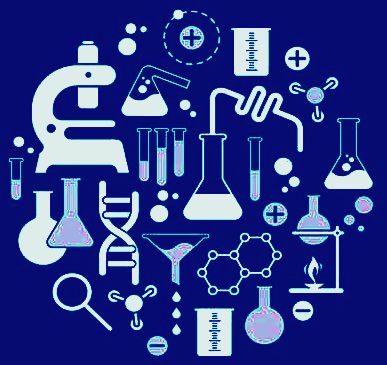
Part 11 page 30
Enhanced or new technologies for maritime traffic management will be key for safer and
more secure operations as well as to lower emissions, whilst supporting a more competitive
maritime transport as part of an integrated transport chain. To reduce congestion in ports and
port fairways, port traffic guidance systems need to be at the same time cost efficient and
easily deployable. Synergies with existing systems should be ensured, with the aim of
integrating the use of port traffic guidance tools by all relevant authorities and ensuring the
full interoperability between Information and Communication Technologies (ICT) systems,
which monitor vessels, freight and port services.
Scope: Proposals should address one or several of the following aspects:
Safer shipping through innovative conceptual (hull, general arrangement) and detail
designs (exterior and interior) of vessels and systems, and through a new approach to
emergency response, to risk-based maintenance, and to the human factor.
New safety devices and their demonstration, including new technologies and
operational solutions for the evacuation of large passenger ships, black-out mitigation,
fire proofing and making ships more salvage friendly.
New and improved systems for the surveillance, monitoring and integrated management
of waterborne transport and other activities (commercial and non-commercial).
New and cost effective European Global Navigation Satellite System (European
GNSS)-based procedures for port approach, pilotage and guidance, ICT-enabled
shipping lanes and maritime services that will reduce the risk of accidents and incidents
in port approaches and dense traffic lanes, and minimise both delays and turn-around
times.
For traffic management, solutions that support the extension, integration and
optimisation of waterborne transport information and communication systems with the
aim of contributing to build a comprehensive "e-maritime" environment (including e-
Navigation components that are compatible with existing or emerging international
standards). They should serve the overall objective of building the European Maritime
Transport Space without Barriers allowing waterborne transport (including inland
navigation) to be used to the full potential of the integrated intermodal logistic chain.
Solutions should also provide the foundation for the deployment of autonomous and
actively guided ships as well as the possibility to verify all related safety certificates
before the vessel enters the port.
Inputs to EU and international regulatory regimes, standardisation and international research
co-operation are expected for the above areas, in particular regarding safety devices and e-Navigation solutions.
In line with the Union's strategy for international cooperation in research and innovation6,
international cooperation is encouraged.
The Commission considers that projects requesting a contribution from the EU between the
range of 4 to 9 million euro would allow this specific challenge to be addressed appropriately.
Nonetheless, this does not preclude submission and selection of proposals requesting other
amounts.
6 COM(2012)497
Part 11 page 31
Expected impact: It is expected to:
Achieve significant improvements in terms of navigational safety and efficiency (in
particular emission reductions) along the entire waterborne transport logistic chain, and
decrease administrative burdens.
Facilitate the transfer of new safety concepts from passenger shipping to other areas of
maritime operations.
Show a statistically relevant decrease in the number of fatalities caused by maritime
accidents, the number of ship losses and specific incidents such as fires or black-outs
accompanied, where relevant, by operational empirical evidence.
Support the upgrading of international maritime safety regimes through relevant inputs.
Type of action: Innovation Actions
MG.4.3-2015. System modelling and life-cycle cost optimisation for waterborne assets
Specific challenge: The European maritime technologies industry is facing fierce global
competition on price in its traditional markets which forces it to shift its focus to profitable
(existing and new) markets where technical excellence and smart custom-made solutions are
the key to market success. In order to develop these niche markets and exploit them
successfully, research and innovation efforts are required that introduce new design and
production processes with the aim of having minimal total costs over the useful economic life
of the product which, for waterborne assets (vessels and maritime structures), is particularly
long (20-50 years).
Scope: Proposals should address one or several of the following aspects:
New design and mathematical modelling tools and paradigms supporting the full
understanding of operational practices and situations covering the entire useful
economic life of a vessel or maritime structure ("from cradle to grave") in terms of costs
and performance.
A comprehensive and detailed approach to system integration and optimisation for
vessels which is multi-objective driven, based on virtual product (digital mock-up)
methodologies (with virtual reality capabilities). The resulting model must include all
technical systems and sub-systems and must cover all operational conditions of the
complete system over the entire life cycle (thus taking into account the uncertainties of
the future operating context). Modelling should cover the majority of ship types
produced in Europe and should be based on the new tools and paradigms, allowing for
short lead times and the optimised use in SME yards building complex vessels.
A large scale virtual demonstrator for smart, adaptive and multi-material complex ships
and structures, based on the design tools and concepts for minimised life-cycle costs
and using the complete product model.
The Commission considers that projects requesting a contribution from the EU between the
range of 5 to 8 million euro would allow this specific challenge to be addressed appropriately.
Part 11 page 32
Nonetheless, this does not preclude submission and selection of proposals requesting other
amounts.
Expected impact: It is expected:
Achieve measurable cost reductions in design, production and lifetime maritime asset
management.
Facilitate a shorter time for assessment and integration of sub-systems on board vessels
and a better integration of complex systems, in particular in relation with energy issues
and efficient operations. This should lead to efficiency gains of 20% in terms of energy
consumption and of 10% in terms of other operational costs.
Type of action: Research and Innovation Actions
The conditions for this topic are provided in the general conditions for this call.
CONTACTS
Vision2020: The Horizon Network is administered by Horizon 2020 Limited, a company incorporated in the United Kingdom for this purpose (no. 8336338). The primary contacts for Vision2020 are:
Abdul Rahim, Director, Horizon 2020 Ltd and SME Director, Vision2020
Julia Skiba, Membership Manager, Vision2020
Horizon 2020 Limited
Argyle House, 29-31 Euston Road
London NW1 2SD, United Kingdom
Email: contact@2020visionnetwork.eu
Phone: +44 (0)20 7687 2020
LINKS
http://www.2020visionnetwork.eu/sme/
http://erc.europa.eu/funding-schemes
http://ec.europa.eu/research/horizon2020/index_en.cfm
http://hawaii.edu/
http://hawaii.edu/
http://hinmrec.hnei.hawaii.edu/
http://www.useoul.edu/
http://ship.snu.ac.kr/
http://www.amc.edu.au/
http://www.gavia.is/
http://www.strath.ac.uk/na-me/
EU
funding schemes Horizon
2020
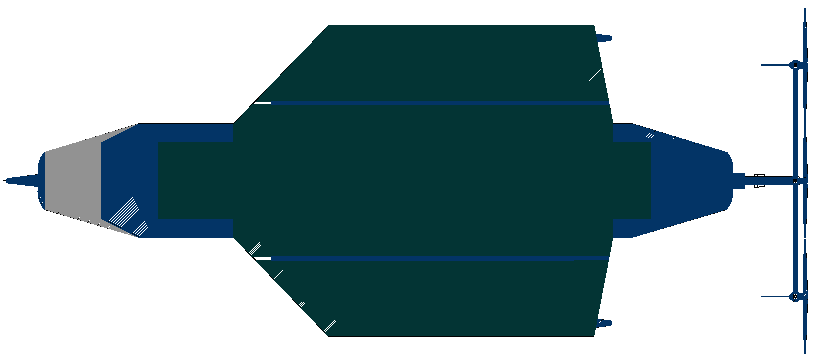
The Bluefish SNAV
platform is enabling technology for ZCCs of the future, based on a stable
SWASH
hull design under development by British engineers in the UK. The design uses no diesel fuel to monitor the oceans
at relatively high
speed 24/7 and 365 days a year - only possible with the unique energy harvesting system. The
hullform is ideal for automatic release and recovery of AUVs, ROVs
or towed arrays. This vessel
pays for itself in fuel saved every ten years.
|





